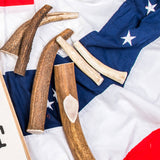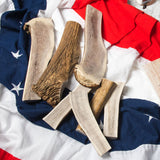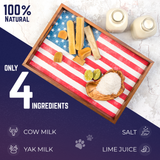Key Takeaways
- A rabbit teething toy helps wear down continuously growing rabbit teeth.
- These toys provide important mental stimulation for rabbits.
- Rabbit teething toys are made from safe, digestible materials.
- They support natural gnawing behaviors essential for dental health.
Table of Contents
- What Is a Rabbit Teething Toy and Why Is It Vital?
- Understanding When and How Rabbits Start Teething
- Types of Rabbit Teething Toys (With Real Use Cases)
- Choosing the Right Teething Toy for YOUR Rabbit
- Safe Introduction and Rotation for Lasting Engagement
- Cleaning, Maintenance, and Replacement Schedules
- Natural vs. Synthetic Rabbit Teething Toys
- Natural vs. Synthetic Rabbit Teething Toys – Data-Backed Comparison
- Preventing Common Problems: Boredom, Destructive Chewing, and Digestive Issues
- Conclusion – The Extreme Ownership Approach to Rabbit Teething & Chew Health
Rabbit Teething Toys – Everything Owners Need To Know For Dental & Behavioral Wellness
Quick Answer: A rabbit teething toy is a specially designed chew item that helps wear down continuously growing rabbit teeth while providing mental stimulation. Unlike generic chew toys, these are crafted from safe, digestible materials that support natural gnawing behaviors essential for dental health.
Rabbit teeth grow relentlessly, up to 3-4mm per week, making proper wear absolutely critical for survival. Without adequate grinding surfaces, rabbits develop malocclusion, painful abscesses, and eating difficulties that can prove fatal. Extra small split elk antlers can be a suitable option for smaller pets needing a safe, natural chew to help manage tooth growth.
Unlike human teeth, rabbit incisors and molars never stop growing. This evolutionary adaptation allows wild rabbits to process tough grasses and bark throughout their lives. Domestic rabbits retain this trait, requiring constant abrasion to prevent overgrowth that leads to jaw misalignment and starvation. For rabbits that need a harder chewing challenge, small whole elk antlers offer a durable, long-lasting solution for dental maintenance.
Chewing isn't recreational for rabbits, it's survival instinct. A quality rabbit teething toy channels this drive constructively, preventing destructive furniture gnawing while maintaining optimal dental length. The grinding motion also releases endorphins, reducing stress and promoting mental wellness.
Key Differences: Teething Toys vs. Chew Toys
True rabbit teething toys feature specific hardness levels that wear teeth without causing fractures. They're sized to prevent choking, made from digestible materials, and designed for extended gnawing sessions. Generic pet chew toys often lack these critical safety features.
Understanding When and How Rabbits Start Teething
Rabbit Tooth Development Timeline
Baby rabbits develop their first teeth around 19-21 days, with adult teeth emerging by 4-5 weeks. Serious chewing behaviors typically begin around 3-4 months when hormone surges drive territorial marking and nest-building instincts.
How to Recognize Teething Behaviors
Classic signs include persistent furniture gnawing, "chinning" objects to mark territory, and increased nipping during handling. Red flags requiring veterinary attention include drooling, difficulty eating, or visible tooth overgrowth beyond normal wear patterns.
Types of Rabbit Teething Toys (With Real Use Cases)

| Type | Material | Suitability | Pros | Cons |
|---|---|---|---|---|
| Wood & Twig Chews | Apple, Willow, Aspen | All ages | Natural, digestible, long-lasting | Can splinter if poor quality |
| Hay-Based Toys | Timothy hay, Orchard grass | All ages | Edible, nutritious, safe | Short lifespan |
| Loofah & Vine | Natural loofah, Grapevine | Gentle chewers | Soft texture, digestible | Limited dental benefit |
| Commercial Silicone | Food-grade silicone | Adult rabbits | Durable, cleanable | Not digestible |
Wood & Twig Chews
Apple and willow wood provide ideal hardness for dental wear. Choose pieces 4-6 inches long with 1-2 inch diameter to prevent choking. One customer reported their Netherlands Dwarf gnawed the same apple wood stick for three weeks, maintaining perfect tooth length throughout.
Hay-Based and Woven Toys
Timothy hay cubes and braided mats serve dual purposes, nutrition and dental care. These rabbit teething toys encourage natural foraging while providing gentle abrasion. Expect 2-3 days of use before replacement.
For more ideas on soothing teething discomfort, you might also find inspiration in this guide to puppy freezer teething toys, which highlights cooling options for young pets.
DIY & Household Safe Chews
Untreated pine blocks from hardware stores work excellently when cut to appropriate sizes. Remove all bark, sand rough edges, and supervise initial use. Cardboard tubes from paper towels offer temporary chewing satisfaction for budget-conscious owners.
Choosing the Right Teething Toy for YOUR Rabbit
Assessing Your Rabbit's Chewing Style
Observe your rabbit for 3 days, noting whether they prefer gentle nibbling or aggressive gnawing. Casual nibblers work well with softer materials like hay cubes or thin willow twigs, while power chewers need hardwood blocks or thick apple branches. Match the toy's resistance to your rabbit's jaw strength, too soft wastes money, too hard risks dental damage.
For rabbits that need a more robust chewing experience, large split elk antlers can provide longer-lasting dental benefits for larger or more determined chewers.
Sizing and Safety Protocols
Choose toys at least twice the width of your rabbit's face to prevent choking. A 4-pound Holland Lop needs different sizing than an 8-pound Flemish Giant. Inspect toys weekly for splintering, sharp edges, or pieces small enough to swallow. Replace immediately if damage appears, rabbit teeth are powerful enough to create dangerous fragments from worn toys.
Material Sourcing & Eco-Standards
Demand untreated, pesticide-free materials with clear sourcing documentation. Organic certifications matter for hay-based toys, while hardwood chews should specify kiln-drying processes. Avoid toys with unclear origins or chemical treatments, your rabbit's digestive system can't process synthetic additives safely.
Top 5 Selection Tips:
- Size up from your initial guess, bigger is safer
- Test one material type before buying multiples
- Rotate hardness levels to prevent jaw fatigue
- Choose toys longer than your rabbit's mouth width
- Prioritize natural, untreated materials over synthetic options
Safe Introduction and Rotation for Lasting Engagement
First-Use Protocol
Present new rabbit teething toys during active periods, typically morning or evening. Hold the toy while your rabbit investigates, allowing them to sniff and tentatively nibble under supervision. Monitor the first 30 minutes closely, removing the toy if your rabbit attempts to swallow large pieces or shows signs of digestive distress.
Pair introductions with positive experiences by offering the toy alongside favorite treats or during floor time. This creates positive associations and encourages exploration. Some rabbits need multiple exposures before accepting new textures, patience beats forcing interaction.
Rotational Toy Method for Preventing Boredom
Rotate toys every 3-5 days to maintain novelty and prevent selective chewing habits. Keep 2-3 toys available while storing others in a clean, dry location. This rotation system extends toy lifespan while providing consistent mental stimulation.
Create a weekly schedule: Monday-Wednesday features wood chews, Thursday-Friday introduces hay-based options, and weekends offer special treats like apple twigs. This predictable variety satisfies natural foraging instincts while maintaining dental health benefits.
For more enrichment ideas, see this helpful overview of rabbit toys and enrichment from the RSPCA.
Troubleshooting Lack of Interest
Rabbits rejecting new toys often respond to scent enhancement, rub toys with fresh herbs like parsley or cilantro. Location changes also spark interest; move toys from cage floors to elevated platforms or hiding spots. Some rabbits prefer discovering toys during exploration rather than direct presentation.
Cleaning, Maintenance, and Replacement Schedules

Cleaning by Material Type
Wood and vine toys require dry brushing to remove debris, with occasional light sanding for splinter prevention. Hay-based toys need spot cleaning only, excessive moisture promotes mold growth. Silicone toys handle dishwasher cleaning but require inspection for nicks that could harbor bacteria.
When to Discard or Replace
Replace rabbit teething toys showing splinters, mold spots, or pieces small enough to swallow whole. General replacement occurs every 3-5 weeks for active chewers, longer for occasional nibblers. Sharp edges, exposed wire, or foul odors signal immediate disposal regardless of age.
Storage and Sanitation
Store clean toys in ventilated containers away from moisture and direct sunlight. Avoid plastic bags that trap humidity and promote bacterial growth. Rotation reduces buildup while maintaining toy integrity between uses.
Teething Toy Care Checklist:
- Weekly visual inspection for damage
- Brush debris from wood toys after each use
- Air-dry toys completely before storage
- Replace at first sign of splintering or sharp edges
- Monitor rabbit's stool for unusual changes
Natural vs. Synthetic Rabbit Teething Toys
| Feature | Natural Materials | Synthetic Options |
|---|---|---|
| Safety Profile | Digestible, pesticide concerns possible | Non-toxic when certified, ingestion risks |
| Durability | 2-4 weeks average lifespan | 4-8 weeks with proper sizing |
| Dental Benefits | Variable hardness, natural wear patterns | Consistent hardness, controlled abrasion |
| Environmental Impact | Biodegradable, renewable sources | Long-lasting but non-biodegradable |
| Cost Range | $2-8 | $5-12 |
Teething Toy Care Checklist:
- Inspect toys weekly for damage or wear
- Clean according to material type guidelines
- Replace every 3-5 weeks or when damaged
- Store in ventilated, dry containers
- Monitor rabbit behavior for rejection signs
Natural vs. Synthetic Rabbit Teething Toys – Data-Backed Comparison
| Factor | Natural Materials | Synthetic Materials |
|---|---|---|
| Safety Profile | Digestible when sourced properly; pesticide risk if untreated | Non-digestible; chemical leaching potential |
| Average Lifespan | 2-4 weeks for active chewers | 6-8 weeks but requires replacement when damaged |
| Dental Benefit | Variable hardness promotes natural wear patterns | Consistent hardness; may not provide optimal wear |
| Environmental Impact | Biodegradable; renewable sourcing | Landfill accumulation; petroleum-based production |
| Cost Range | $3-8 per toy | $5-12 per toy |
Material Safety and Toxin Risks
Natural doesn't automatically mean safe, untreated apple wood carries pesticide residues, while moldy hay toys harbor dangerous spores. Synthetic materials require scrutiny for phthalates and chemical stabilizers that leach during chewing. Demand organic certifications for natural toys and food-grade standards for synthetic options.
For those seeking a variety of natural options, premium Grade-A elk antler dog chews are available in both whole and split cuts, offering choices for different chewing preferences.
Longevity and Wear Patterns
Wood-based rabbit teething toys typically last 2-4 weeks with moderate use, while quality silicone options endure 6-8 weeks. Natural materials wear gradually, creating appropriate dental friction. Synthetic toys maintain shape longer but may not provide optimal tooth wear patterns essential for dental health.
Impact on Rabbit Health
Natural materials support digestive health when consumed in small amounts during normal chewing. Synthetic ingestion poses blockage risks requiring veterinary intervention. Allergic reactions occur more frequently with treated natural materials than food-grade synthetics, making sourcing transparency crucial.
Preventing Common Problems: Boredom, Destructive Chewing, and Digestive Issues

Redirecting Problem Behaviors with Teething Toys
When rabbits target furniture instead of designated toys, immediately redirect attention to appropriate chews while blocking access to damaged areas. Place multiple rabbit teething toys near problem spots, baseboards, chair legs, and carpet edges. Reward successful toy use with treats to reinforce positive associations.
Environmental modifications amplify redirection success. Elevate valuable items, provide alternative textures at rabbit level, and ensure toys offer comparable satisfaction to forbidden objects. Consistency in redirection prevents selective destruction patterns from establishing.
For additional creative enrichment ideas, check out this article on hedgehog toy enrichment, which can inspire new ways to keep small pets engaged.
Avoiding and Managing Digestive Upset
Limit initial chew sessions to 15-20 minutes daily, gradually increasing as your rabbit's system adapts. Monitor stool consistency and frequency, loose droppings or reduced output signals overconsumption. Normal ingestion produces small wood particles in droppings; large chunks indicate inappropriate toy sizing.
Emergency intervention becomes necessary if rabbits stop eating, produce no droppings for 12 hours, or show lethargy after toy introduction. Remove all toys immediately and contact your veterinarian, GI stasis requires prompt professional treatment.
Aggression or Frustration During Teething
Teething discomfort manifests as increased nipping, territorial behavior, or food guarding. Provide softer chew options like hay cubes alongside harder toys, allowing rabbits to self-select based on comfort levels. Cold toys stored in refrigerators offer additional relief during peak discomfort periods.
Top 4 Signs Your Rabbit Needs a New Teething Toy:
- Persistent furniture or cage bar chewing despite toy availability
- Sudden aggression or territorial behavior changes
- Digestive irregularities following toy introduction
- Complete disinterest in current toy selection for 3+ days
For more in-depth information on rabbit toy safety and behavioral enrichment, visit this resource from the Long Island Rabbit Rescue: rabbit toys.
Conclusion – The Extreme Ownership Approach to Rabbit Teething & Chew Health
Successful rabbit teething toy management demands proactive leadership, not reactive solutions. Your rabbit's dental health depends entirely on your commitment to providing appropriate chews, monitoring usage patterns, and adapting strategies based on individual needs. This isn't about finding the perfect toy, it's about creating a comprehensive system that evolves with your rabbit's development.
Take full responsibility for your rabbit's enrichment needs by implementing structured routines, maintaining quality standards, and staying ahead of potential problems. The difference between thriving rabbits and those with behavioral or dental issues often comes down to owner consistency and attention to detail. Your rabbit teething toy choices today determine your pet's long-term health and happiness.
For rabbits with especially strong chewing instincts, MONSTER whole elk antlers provide an ultra-durable option for extended gnawing sessions.
Your Rabbit Deserves Leadership, Not Luck
- Audit your rabbit’s chewing needs and rotate toys for enrichment.
- Inspect, clean, and replace toys proactively, don’t wait for problems.
- Choose materials and sizes that match your rabbit’s habits and health.
- Lead with discipline and compassion, your rabbit’s wellness depends on it.
Frequently Asked Questions
Why is it important to provide a rabbit with a teething toy instead of a generic chew toy?
Rabbit teething toys are specifically designed to wear down continuously growing teeth safely without causing fractures. Unlike generic chew toys, they use digestible, appropriately hard materials sized to prevent choking and support natural gnawing behaviors essential for dental health.
At what age do rabbits typically start teething and show chewing behaviors?
Rabbits usually begin teething and exhibiting chewing behaviors within the first few weeks of life as their baby teeth emerge and adult teeth start developing. This natural urge continues throughout their lives due to their teeth's constant growth.
What materials are considered safe and effective for rabbit teething toys?
Safe rabbit teething toys are made from digestible, non-toxic materials such as untreated wood, hay-based composites, and small natural antlers like split or whole elk antlers, which provide the right hardness to wear teeth without harm.
How can I recognize signs of dental problems in my rabbit related to teething?
Watch for signs like decreased appetite, drooling, difficulty chewing, weight loss, or changes in behavior such as reluctance to eat or pawing at the mouth. These may indicate overgrown teeth or malocclusion requiring veterinary attention.






